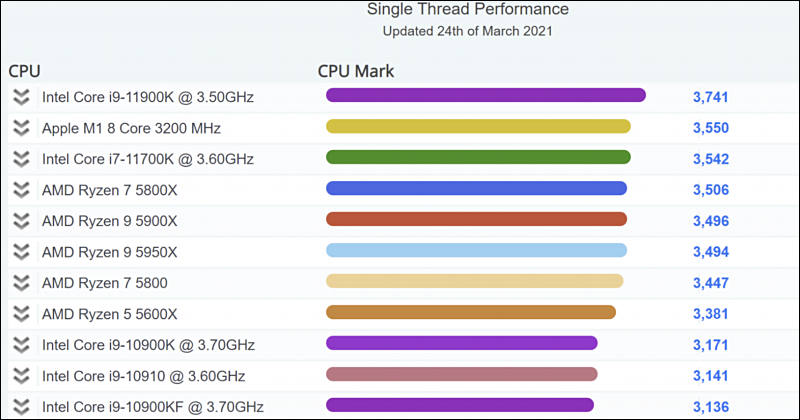
-
Leaks inside Apple
AMD secretly negotiates with Apple considering 5nm TSMC process as developers tell.
Investors and Apple management ask to shift new 5nm Zen at least one year, preferably 1.5 year. Such way Apple can gain more market share and as each Apple product is more profitable it is also financially also more viable for core investors who control both companies.
Apple notebook team working on models with AMD chips still alive and well. Yet we won't see them within next year.
-
Interesting rumor
Apple plan to manufacture all 3nm (and later 2nm) computer and smartphone main LSI in the US as soon as TSMC factory will be up and running. Also all core suppliers of TSMC factory had been asked to also move production to US.
Apple can also organize big investment into TSMC and suppliers that can reach $50 billions.
Within 5 years Apple will totally leave Taiwan. Main reason cited is region rising instability and risk of Chinese invasion.
-
Sample of second round marketing
Several dedicated people worked with Linus on this.
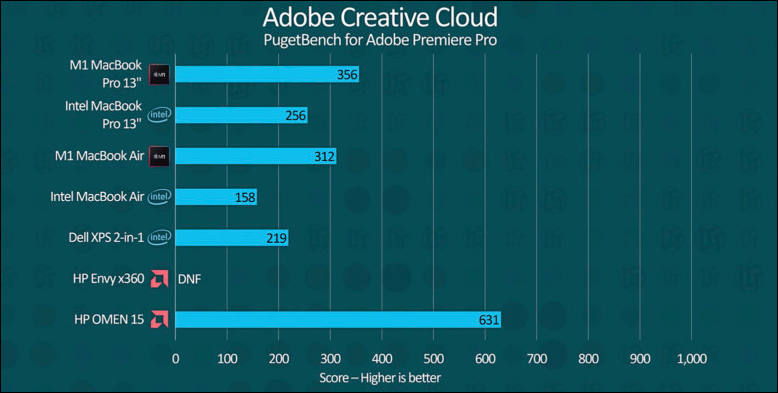
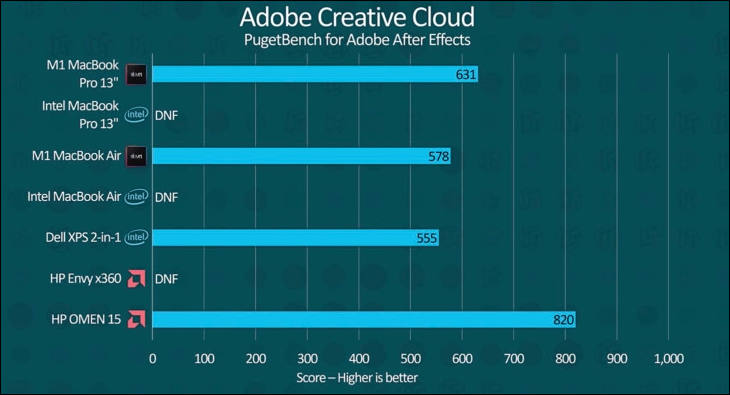
Note how it is always PugetBench thing that had been made with close Apple participation (of course Puget will tell you otherwise).
Remember - always ignore any video or photo related benchmarks from Puget Systems.

 sa16050.jpg778 x 393 - 39K
sa16050.jpg778 x 393 - 39K
 sa16051.jpg730 x 395 - 40K
sa16051.jpg730 x 395 - 40K -
Apple sent note to developers in at least 2 big companies about their CPU plans
Apple told not to expect rise of single core performance, instead it can drop up to 20% in newer chips in new notebooks. Number of cores will rise and Apple asked to focus all optimizations of this. Also Apple will increase number of closed CPU blocks used for various acceleration things, including use GPU for calculations. Not all developers will be getting full detailed docs on this, company must be inside tight circle to sign special agreements.
With ARM chips Apple will use approach they long dreamed about - sign set of secret private agreements with largest software developers to help eliminate small fish as they are stealing Apple money, by destroying small and medium companies Apple plan to make exact copies of their software and later sell them as part of their cloud subscription. Developers hear this talks happening quite often lately inside Apple software teams management.
-
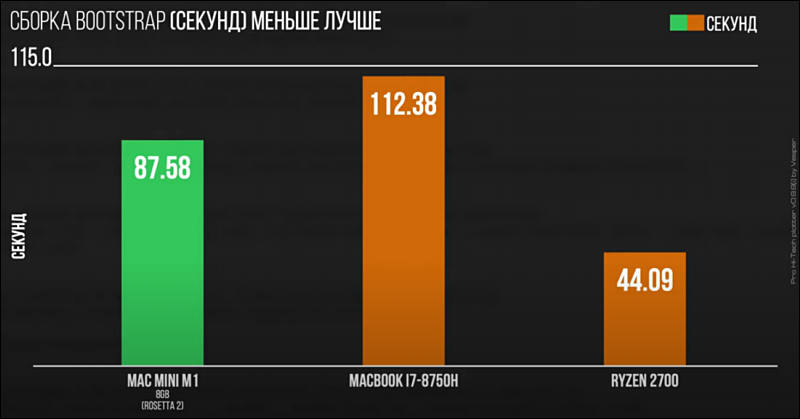
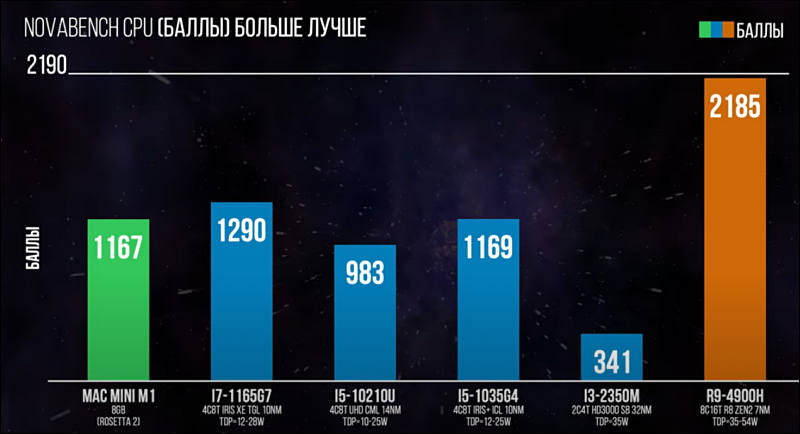
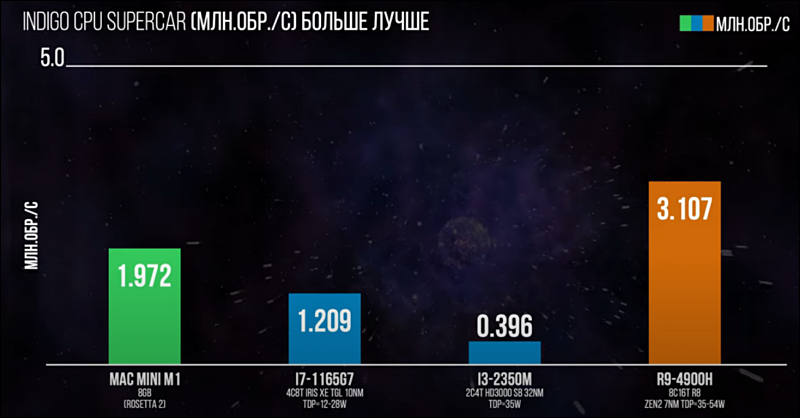
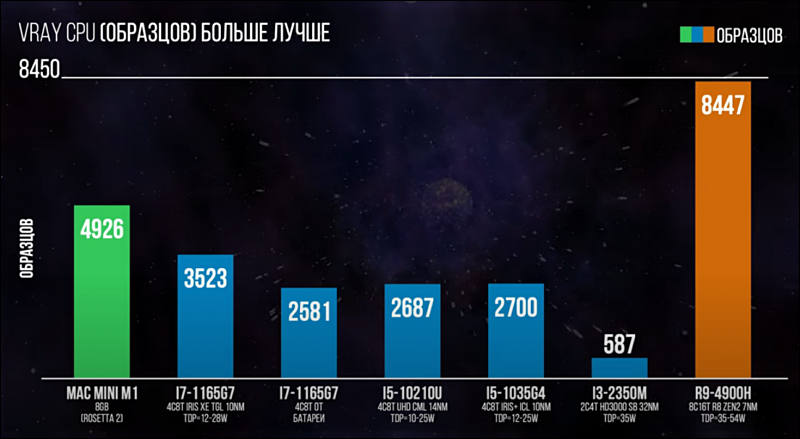
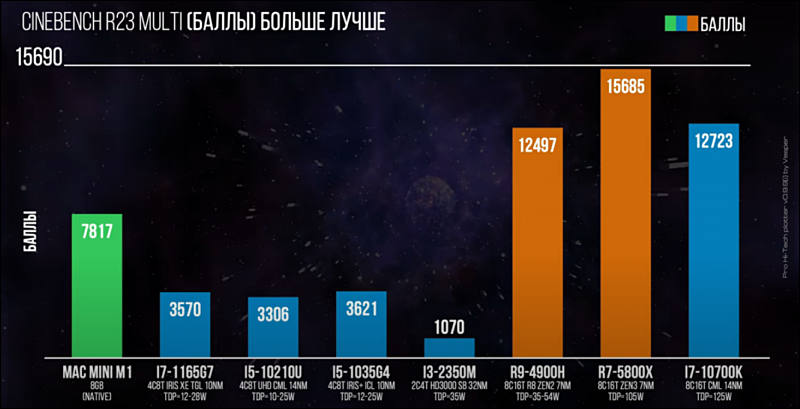

 sa16057.jpg800 x 419 - 30K
sa16057.jpg800 x 419 - 30K
 sa16058.jpg800 x 434 - 41K
sa16058.jpg800 x 434 - 41K
 sa16059.jpg800 x 418 - 34K
sa16059.jpg800 x 418 - 34K
 sa16060.jpg800 x 439 - 42K
sa16060.jpg800 x 439 - 42K
 sa16061.jpg800 x 409 - 42K
sa16061.jpg800 x 409 - 42K -
New interesting rumors
Development of M1 started three years ago. And two years ago after internal presentation with initial tests and information Apple had been ORDERED by their three leading investors to fully move into proprietary ARM Mx chips. Initially none of managers supported this move, as they wanted to move only Air lineup to ARM and even for them keep using x86 chips for some models.
Investors hope that by moving to ARM they will be able to fully close ecosystem and ban application they don't want to see on new Macs. This stage will come in 2021 and finish in 2022.
-
All M1 computers have hardware issues with output to monitors
Some problems have come to light in Mac products equipped with the new CPU "M1" announced and released by Apple in November 2020.
EIZO Co., Ltd. quickly released information on compatibility with its monitors. It is said that there are cases where gradation skipping occurs in the video output from the Mac side equipped with M1. It is also reported that there is a partial workaround for this problem, but only for certain products.
According to EIZO, if you connect an external monitor to a Mac equipped with M1 with an HDMI cable, you may not be able to see the original color and color gradations that monitor can show. It is problem common for any monitors.
The cause of the problem is that the video signal from the Mac equipped with M1 is always output in a format that uses compression, called YUV / Limited Range, instead of RGB full-range output.
The YUV output of the M1 equipped Mac has less gradation than the full range, so it may be because the original reproduction cannot be obtained even if this is converted to the full range.
The Mac product equipped with this M1 does not solve the problem even if it uses a USB Type-C connection or DisplayPort conversion connection.
-
Apple vinegar for everyone!! Was a fine wine.
10bit full RGB may be only for Mac Pro range.
-
New predictions
Apple is preparing to release two models with a screen diagonal of 14 and 16 inches, which will have a flat-edged body "similar to the iPhone 12" without any curves of current models. This will be the most significant design update for the MacBook Pro in five years.
The company will be phasing out the Touch Bar, returning to physical function keys. Apple will also return the MagSafe charging connector, mostly due to the sheer number of burned out USB-C ports. The updated MacBook Pro will have additional ports and possibly even memory card readers. Most users will not need to use additional hubs to connect other devices.
It is also reported that the new MacBook Pro models will use only Apple branded chips - configuration options with Intel processors are not provided.
The new MacBook Pro models are forecast to ship in the third quarter of 2021.
-
Small rumors
Last week Apple had been very upset with TSMC performance considering new upcoming CPUs, developers talk that chips still are not even close to required frequency, issue can be in local thermal design error.
Apple can decide to turn off certain CPU parts to try to go around issue as making new set of masks is extremely costly.
Another talks is that 3nm and 2nm TSMC processes can be delayed by at least 1 year. Apple plans to keep 5nm products for quite long time.
-
@Vitaliy_Kiselev You write a lot of interesting stuff, some of it I am refusing to believe though because it barely makes any sense, even for Apple, if they want to increase their market share.
I bought the M1 Macbook Air as a student to do light work on the go when I am not at my desktop windows PC. It seemed like the perfect option because it has a much better screen, trackpad, keyboard, speakers, and build quality compared to other windows laptops in this price range. I made sure to buy it through an Apple Reseller and I also live in the EU which means I get a 2-year warranty in case Apple decides to fuck users over once again (they seem to have kind of reduced that behavior with some of their latest products).
The first interesting thing you wrote is that a high-density, fully integrated SoC cannot run at high temperatures and will be subjected to extreme degradation if that happens. For comparison, AMD's 7nm CPUs (Ryzen 3000/4000/5000) all have a maximum design limit of 105°C. Some laptops running these processors violate that and let the CPU get over 110°C in pursuit of maximum performance (
). The AMD chip is similar to the M1 by having all of the parts (GPU, controllers, CPU) in one die. Wouldn't these high temperatures also be dangerous to the chip and result in fast degradation?Second thing is that you say the M1 does not actually perform good and it's all just thanks to software optimization. I have a Ryzen 5 1600 overclocked to 3.85GHz in my desktop computer that consumes about 110W under Cinebench R23 load. I have a Noctua NH-U12S cooler on that processor, so thermals are not an issue. My workload includes Arduino code compilation (C). Large code for more advanced ARM-based microcontrollers compiles about 3 times faster on the M1MBA running in Rosetta 2 than it does running natively on my PC. This just does not seem right with your claims.
In terms of battery life, I am getting ridiculously good numbers. I use the laptop mainly for MS Teams (x86 based) calls, during which I have about 30 Safari tabs open, Discord running (x86 based app), Spotify running (x86 based app) and VSCode running (Apple Silicon app). I keep my brightness within about a third or half and my speaker volume about a third or half as well. After about 5 hours of classes, my battery loses 25-30% charge. This means I can basically go 3 full days of school on one charge. Isn't that a good number? It seems pretty good to me.
You make a lot of claims that suggest Apple is going to absolutely torture and bully their userbase/potential customers. That just does not seem right, even for Apple. Especially the one USB-C/unlock rest for $100 thing. Also, the claim that Apple is going to lock people out from downloading apps not present in the App Store. I understand why they would do that, but if they were to actually do that, nobody would buy any new Macbook. And a lot of their current users (including me) would just leave the platform altogether. I highly doubt that's what Apple's shareholders would want given the market share of macOS has dwindled under 10% and has been overtaken (https://www.bbc.com/news/technology-56116573) by Chrome(me) OS.
Lastly, a technical question, you state that the USB-C ports on the M1 go directly to the SoC, yet there is a TI CD3217B12 USB-C controller present on the board and also an Intel Thunderbolt repeater. Were you wrong in the first statement and the USB line goes to those chips first or is it actually directly connected to the SoC?
-
You even registered to write all this :-) Interesting.
It seemed like the perfect option because it has a much better screen, trackpad, keyboard, speakers, and build quality compared to other windows laptops in this price range
It is not, as it is really not so hard to find good screen and much better keyboard. For one can propose to look at Thinkpads, one-two generations back, lot of refurbished ex corporate notebooks that outperform Apple products by far. Keyboard is better than Apple, more ports, repairable. If you select proper lineup - also upgradable.
If you 100% want thin small and not much upgradable note - look for Carbon lineup. I myself is not big fan of such despite I own one myself for some fast simple editing work, it has nice bright 100% sRGB 2K touchscreen.
The first interesting thing you wrote is that a high-density, fully integrated SoC cannot run at high temperatures and will be subjected to extreme degradation if that happens. For comparison, AMD's 7nm CPUs (Ryzen 3000/4000/5000) all have a maximum design limit of 105°C. Some laptops running these processors violate that and let the CPU get over 110°C in pursuit of maximum performance (
I think you got it all very strange.
AMD 7nm GPUs have larger die, usually weaker GPU 9they still use old generation cores due to this) that is also distributed on larger die. Cooling for 90% of AMD notebook computers are much better, some of them have almost perfect cooling. Manufacturers are not concerned to keep things silent as Apple is doing.
AMD also do not have such extreme dynamic shutdown approach for their CPUs. They act as usual old Intel chips where frequency drop as chip heats up.
Apple also do not use desktop class 5nm TSMC process, as this is not available even. They use 5nm made for mobile chips. It has lot of limitations, including heat tolerance and frequency. As main goal is to keep consumption low.
My personal opinion is that M1 will be first chip where main CPU degradation will be really major cause of total computer failure within 3-5 years of computer life. Air model will lead the way, obviously.
Second thing is that you say the M1 does not actually perform good and it's all just thanks to software optimization. I have a Ryzen 5 1600 overclocked to 3.85GHz in my desktop computer that consumes about 110W under Cinebench R23 load. I have a Noctua NH-U12S cooler on that processor, so thermals are not an issue. My workload includes Arduino code compilation (C). Large code for more advanced ARM-based microcontrollers compiles about 3 times faster on the M1MBA running in Rosetta 2 than it does running natively on my PC. This just does not seem right with your claims.
Sounds like Apple marketing material. I never told that M1 is bad or badly performing. I told that it is not outstanding if you make real comparative tests.
I said that Apple specially arrange tests and pay to influencers and bloggers to make it look better.
And yes, it seems like fully match with my claims, as you tell about some very specific task of yours that no one can else can check. It also is highly affected by DRAM and SSD speed. C compilers are known for extreme inefficiency and very dependent on SSD and DRAM (it is the way C linking and compilation works), as I said. Apple had slides about this in their bloggers materials and how to exactly push this scenario. I actually wrote about this exact thing before.
In terms of battery life, I am getting ridiculously good numbers. I use the laptop mainly for MS Teams (x86 based) calls, during which I have about 30 Safari tabs open, Discord running (x86 based app), Spotify running (x86 based app) and VSCode running (Apple Silicon app). I keep my brightness within about a third or half and my speaker volume about a third or half as well. After about 5 hours of classes, my battery loses 25-30% charge. This means I can basically go 3 full days of school on one charge. Isn't that a good number? It seems pretty good to me.
Apple computers have nice battery life because OS and hardware are designed by one company and Apple is best at dynamically switching things off. Yet I do not understand all this battery life prizing stuff, for real life long battery life is much less important for notebook.
I can get simple cheap (now) Thinkpad near me and make it run 5 days on batteries just changing battery during work (as second one is internal). But what for?
Lastly, you make a lot of claims that suggest Apple is going to absolutely torture and bully their userbase/potential customers. That just does not seem right, even for Apple.
Really? Are we in the same reality? As none of notebook users are worse treated than Apple owners.
Also, the claim that Apple is going to lock people out from downloading apps not present in the App Store. I understand why they would do that, but if they were to actually do that, nobody would buy any new Macbook.
And why lot of people are buying their tablets and smartphones where it is standard thing?
And a lot of their current users (including me) would just leave the platform altogether.
I laughed so loud. No one cares for you. This guys want money and lots of them. And this, in turn, means that they want full monopoly powers, including totally closed ecosystem.
Just watch now they slowly crackdown all independent repairs.
I highly doubt that's what Apple's shareholders would want given the market share of macOS has dwindled under 10% and has been overtaken (https://www.bbc.com/news/technology-56116573) by Chrome(me) OS.
Do not worry, as shareholders (largest) are same for Apple and Alphabet - they will do good.
Lastly, a technical question, you state that the USB-C ports on the M1 go directly to the SoC, yet there is a TI CD3217B12 USB-C controller present on the board and also an Intel Thunderbolt repeater. Were you wrong in the first statement and the USB line goes to those chips first or is it actually directly connected to the SoC?
I wrote that I had been told at the time by guy who did some Apple repairs. You can see posts history and first disassembly happened well after this. May be it is not such (at least all Thunderbolt lines must go via chip you mentioned), may be it is still true as some other lines can go direct.
We need to wait for this one until repair information will be widely available.
I know that Apple managers had some envy on how USB ports are made on some of Windows notebooks :-) For now only Intel Thunderbolt licensing and patents prevented Apple to repeat this.
-
@Vitaly_Kiselev Yes, of course I considered a Lenovo Thinkpad. I specifically looked at the T and X1 Models. Here in my country/region/market, a base-model T14s with AMD Ryzen 4650U and 300 nit display costs about 15% more than the M1 Macbook Air in the specification I got (base + 16GB RAM). The upgraded model with Ryzen 7 and 400 nit display about 30% more. 8th Gen X1 Carbon starts at 30% more than the M1 Air for 8th gen i5 and Full-HD 300 nit display. Every X1 better than that is somewhere between 50% and 100% more expensive than the M1 Macbook Air. Obviously, I looked at the used options as well. A fully decked out, used T480s with an 8th Gen i7 and the 50% sRGB Full HD screen (the better one was never sold here) costs about the same as a base M1 Macbook Air. Obviously comes with 0 warranty. Older T4xx generations have really weak CPUs by today's standards, so I didn't even consider those. The laptop configurations here suck, as even the most expensive windows workstation laptops tend to come with base level displays.
-
Here in my country/region/market,
What is your country?
Thinkpads are priced for corporations, so new ones are rarely best choice.
used T480s with an 8th Gen i7 and the 50% sRGB Full HD screen
Where you found such? As I remember worst screen they had was 67 or 71% sRGB.
Obviously comes with 0 warranty.
It is wrong way to view repairs, as on Thinkpads you usually can replace motherboard and screen for sane prices, contrary to Apple. Also note that for lot of cases Apple warranty won't work (spilled water, fall, etc).
The laptop configurations here suck, as even the most expensive windows workstation laptops tend to come with base level displays.
Where are you?
-
@vitaliy Can you link that. I have big trouble find 100RGB laptops dont need a touchscreen at all but if there is same good once which run 4k easy with RGB I like to get one.
"If you 100% want thin small and not much upgradable note - look for Carbon lineup. I myself is not big fan of such despite I own one myself for some fast simple editing work, it has nice bright 100% sRGB 2K touchscreen."
-
You need to find reviews where they measure panels.
For older Thinkpads 14" 2.560 x 1.440 IPS non touch screen had 97-98% sRGB, touch is 95-98%.
It is also best to ask seller to run utility to show you exact panel model and also battery state (https://www.aida64.com/products/aida64-engineer ).
-
One more interesting rumor inside from Apple
Quite soon Apple will stop any repairs of x86 computers, including notebooks. They already stopped making lot of parts.
Apple will offer exchange to ARM based machines (sometimes with additional payment) instead of your notebook repair.
In 2022 same will happen with many x86 based desktops and integrated computers.
-
Native Photoshop benchmarks
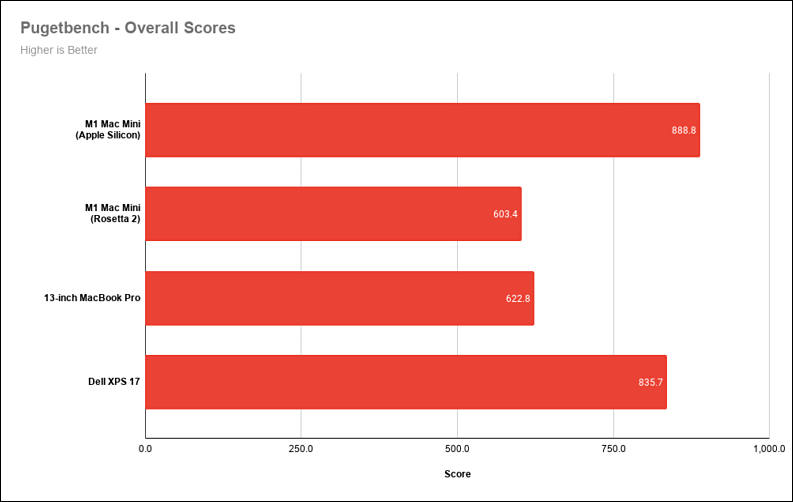
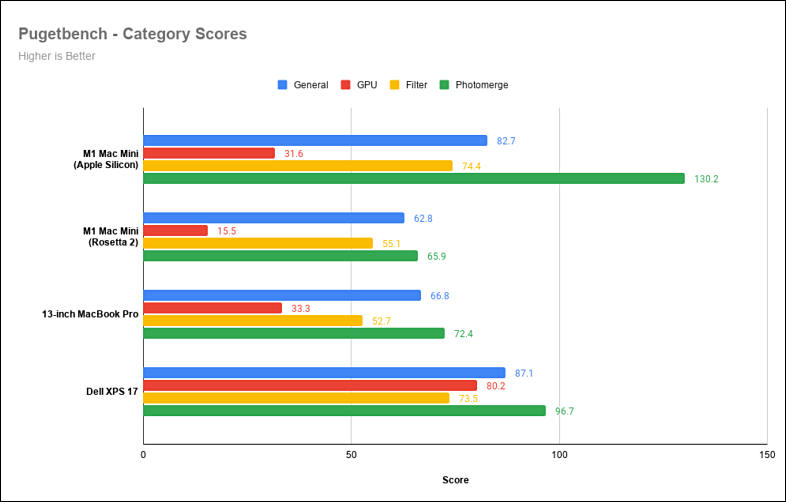
Note that this is again Puget benchmarks, ones that Apple work tightly with and that they recommended to all bloggers during first benchmarks wave.
Always demand to see independent benchmarks that are based in real working scenarios contrary to Puget.

 sa16669.jpg793 x 502 - 37K
sa16669.jpg793 x 502 - 37K
 sa16670.jpg786 x 502 - 46K
sa16670.jpg786 x 502 - 46K -
According to authoritative analyst Ming-Chi Kuo, Apple plans to release an updated 16-inch MacBook Pro and an all-new 14-inch laptop with proprietary processors in the second half of this year. A recent report from Nikkei Asia confirms this timeline.
The publication noted that Apple has postponed the start of mass production of two new MacBook models from May or June until the second half of the year. It is reported that both new computers will use Apple's proprietary ARM chipsets. Perhaps we are talking about an improved version of the current M1. It is unlikely that Apple will equip the 16-inch MacBook Pro, which is the company's flagship laptop, with the same chip as the shareable MacBook Air.
The new MacBook Pros are expected to receive Mini-LED displays, HDMI ports and SD card readers. Some sources also claim that the company will return the magnetic MagSafe charging connector to branded laptops and ditch the controversial Touch Bar.
As PV previously reported Apple has heavy issues with new LSI/CPUs for Mac computers.
TSMC 5nm is not ready for desktop or even advanced notebook usage, and present mobile 5nm variant is used by Apple on 99% of its capabilities. But Apple still trying to make things work, even if they will take initially all 100% of TSMC capacity.
I don't have any new leaks but it can be that Apple will decide to cut frequencies even more and rely more on superb marketing machine they managed to build up. Another variant will be cutting cache and GPU performance to make chips smaller and less hot.
-
New thing surfaced - extreme amount of SSD writing on M1 devices
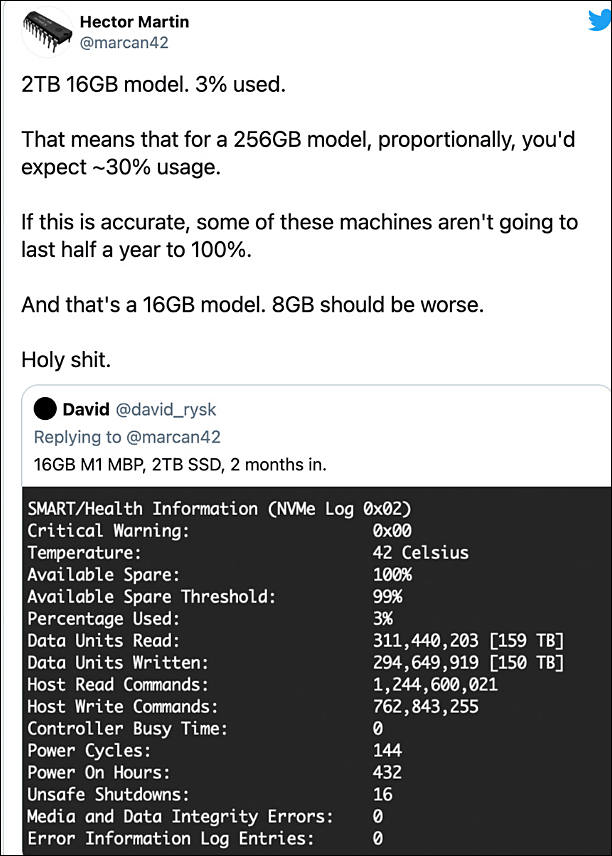
Turning off Spotlight and other stuff does not fix it.
One of the unofficial rumors is that M1 directly use SSD for memory swaps if RAM size becomes not enough, issue can be in hard coded algorithm were M1 start dumping big amount of RAM each few seconds. LSI can go around OS limits and written sectors are dynamically masked from OS access.

 sa16738.jpg612 x 856 - 85K
sa16738.jpg612 x 856 - 85K -
Short issues summary
-
More on M1 HDMI hardware bug
On March 25, EIZO Corporation announced a follow-up report on its Web page regarding display compatibility issues related to M1 Macs and external monitor connections.
The problem is that when you connect an external monitor to a Mac equipped with M1, you will not be able to obtain the proper colors and gradations on your monitor.
The cause is that the YUV output used for the video signal output of the Mac equipped with M1 is alwys using limited range option, so there is a problem when converting to the full range.
According to the update, in the macOS Big Sur environment of version 11.2 or later, the problem has been resolved only on some monitors.
Monitors that work properly - models that do not have audio input / output (ColorEdge series for EIZO products), and only when this is connected via USB Type-C or DisplayPort, in this case the mismatch in color gamut and gamma value is resolved.
Even monitors that support audio input and output may be able to solve the problem if the product does not have an HDMI input.
If you use HDMI connection problems still occur even with macOS Big Sur version 11.2 or later.
Short summary - M1 HDMI implementation has severe hardware bug preventing proper use of HDMI port for grading or editing work. Use DisplayPort monitors or wait for M2 chip.
Howdy, Stranger!
It looks like you're new here. If you want to get involved, click one of these buttons!
Categories
- Topics List23,990
- Blog5,725
- General and News1,353
- Hacks and Patches1,153
- ↳ Top Settings33
- ↳ Beginners256
- ↳ Archives402
- ↳ Hacks News and Development56
- Cameras2,367
- ↳ Panasonic995
- ↳ Canon118
- ↳ Sony156
- ↳ Nikon96
- ↳ Pentax and Samsung70
- ↳ Olympus and Fujifilm101
- ↳ Compacts and Camcorders300
- ↳ Smartphones for video97
- ↳ Pro Video Cameras191
- ↳ BlackMagic and other raw cameras116
- Skill1,960
- ↳ Business and distribution66
- ↳ Preparation, scripts and legal38
- ↳ Art149
- ↳ Import, Convert, Exporting291
- ↳ Editors191
- ↳ Effects and stunts115
- ↳ Color grading197
- ↳ Sound and Music280
- ↳ Lighting96
- ↳ Software and storage tips266
- Gear5,420
- ↳ Filters, Adapters, Matte boxes344
- ↳ Lenses1,582
- ↳ Follow focus and gears93
- ↳ Sound499
- ↳ Lighting gear314
- ↳ Camera movement230
- ↳ Gimbals and copters302
- ↳ Rigs and related stuff273
- ↳ Power solutions83
- ↳ Monitors and viewfinders340
- ↳ Tripods and fluid heads139
- ↳ Storage286
- ↳ Computers and studio gear560
- ↳ VR and 3D248
- Showcase1,859
- Marketplace2,834
- Offtopic1,319



